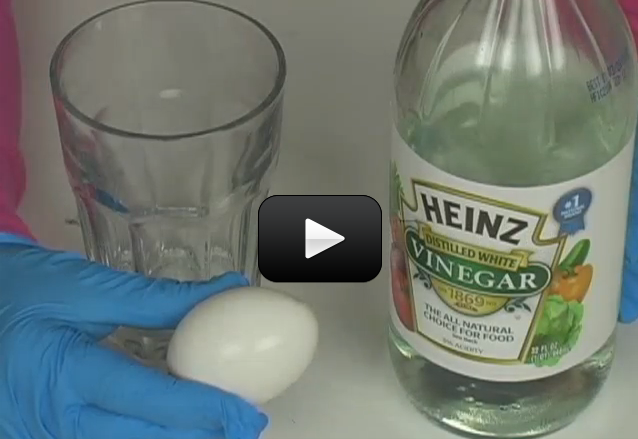This lab has two parts. First, you will learn a bit about how specific chemicals react in a specific manner. And next, you will learn a bit of biology: the structure of bird bones and the minerals that compose them.
[am4show have=’p8;p9;p11;p38;p92;p29;p56;p81;p87;’ guest_error=’Guest error message’ user_error=’User error message’ ]
Here’s what you need
- 4 fresh chicken wing bones, meat removed
- 1-16 oz. bottle of distilled white vinegar
- 2-12 oz. plastic cups
- 1 fresh egg
- 1 spoon
Here’s what you do
- Make sure all the meat and cartilage is gone. Check near the joints for soft, white-gray matter and clean it off. Now break a bone in half. What does the inside look like? Note the color and hardness for your data. Be sure to wash your hands well after studying the bones.
- Pour some vinegar in a cup and gently place the bones in the solution. Add more to cover the bones, if needed. Put the cup in a spot where it won’t be disturbed for a few days. It will take a while for the vinegar to fully react with the bones.
- Take a look at the egg and note its color and hardness in your experiment data. Now carefully place the fresh egg in the second cup and pour vinegar over it. Be sure to completely cover the egg. You will need to cover the egg or keep an eye on it. The vinegar will evaporate and will need to be replenished. This portion of the experiment will take around 24 hours.
- Use the spoon to remove the egg after 24 hours has passed. Set it down and gently push on it. What happened to the part that used to be shell? Check your notes from the previous day and note any changes that have occurred in the color and hardness of the egg after it has been in the vinegar.
- After a few more days, take the chicken bones out of the vinegar. Bend them and see what happens. Do they break as easily as they did the first day? Look at your data and compare the color and hardness of the bones now to how they looked on the first day. Record the changes you observe.
What’s going on?
Calcium is the mineral in both bones and eggshells that makes them hard. Putting the bones and egg in vinegar caused the calcium to begin to react. Vinegar leached calcium from both the bones and the shell, which caused their hardened structure to become weak.
Did you know that your bones and teeth contain 99% of the calcium in your body? About ¾ of your bones are compact, but the remaining ¼ of them is spongy. But do you think your bones or your teeth are harder? The second hardest material in your entire body is the compact, hard bone. Your teeth enamel is actually the hardest material.
[/am4show]

